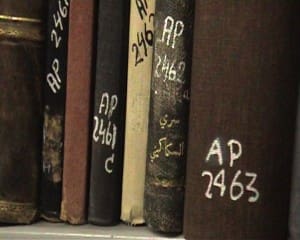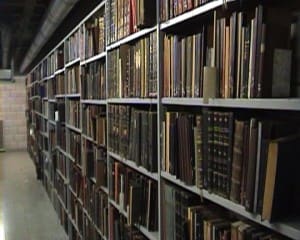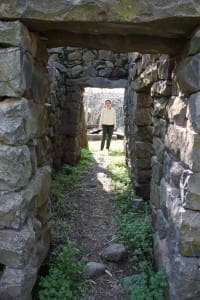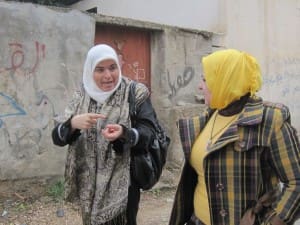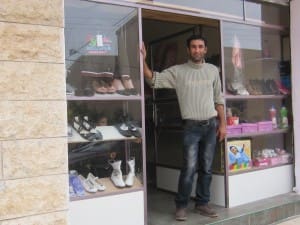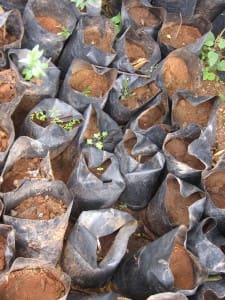Kufr Aqab is a unique neighborhood of Jerusalem because it lies on the West Bank side of the Annexation Wall. This means that Palestinians living in Kufr Aqab can keep their rights as residents of Jerusalem but have access to Ramallah without passing through a checkpoint. It also means that the Israeli Jerusalem Municipality is responsible for all municipal functions in Kufr Aqab, although it is separated from the rest of Jerusalem by the Qalandia checkpoint. Kufr Aqab is not the only anomaly—where the legal status and geographic realities conflict—but it’s among the most important. Palestinians are fighting to keep Kufr Aqab part of Jerusalem and to keep Jerusalem part of Palestine. Nura Alkalili (Lund University), Muna Dajani (Birzeit University) and Daniela De Leo (Sapienza University Rome) conducted research to voice the realities and concerns of the voiceless Palestinians in Jerusalem, including in Kufr Aqab. Their research findings have been presented in conferences in Turkey, Argentina and Italy. In this guest post,environmental researcher and activist, Muna Dajani explains some of the complexities of life in Kufr Aqab and how residents are responding.
Israeli Sanctioned Chaos
I set out with two friends, Nura AlKhalili, an urban planner, and Daniela De Leo, an Italian professor, to research the construction boom and chaos of Kufr Aqab. Agno” between Jerusalem and Ramallah, there are shocking urban transformations in the neighborhood.
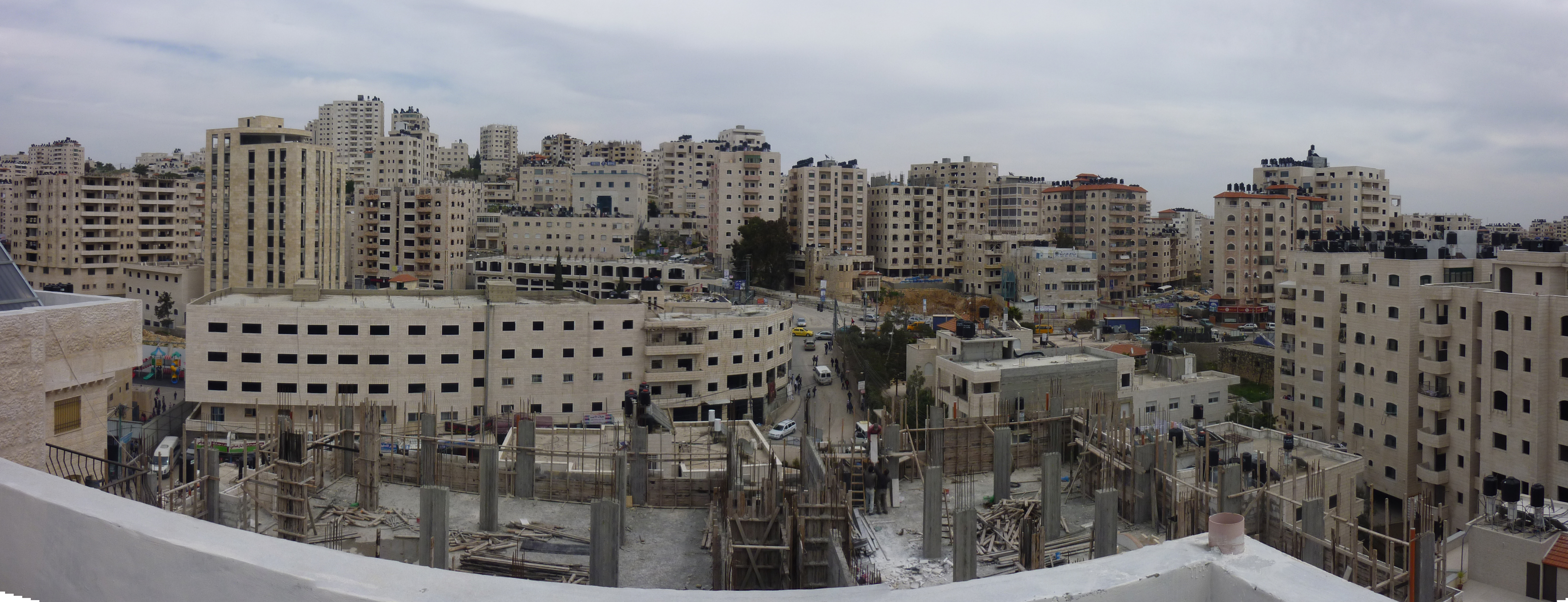
Kufr Aqab is easily identified by endless rows of towering buildings averaging ten stories high. Most are apartment blocks with commercial shops on the street level. Adjacent to each other, they threaten to fall over like dominos. The streets of Kufr Aqab are full of signs announcing vacancies and apartments for sale despite visible deficiencies: air contamination from the daily burning of garbage (because it is hardly ever collected), lack of proper water and electrical infrastructure, and streets that are not even asphalted.
The streets are overrun with cars with yellow Israeli license plates, yet none of the strict Israeli traffic laws seem to apply in Kufr Aqab. Cars drive in the opposite direction on the high-speed road and cars and trucks are parked in every direction possible. Other Israeli laws aren’t enforced either. For example, construction is booming without building permits and sometimes without the landowners’ knowledge and consent!
Despite this dark and distorted “development,” Kufr Aqab has become the temporary living solution for more than 60,000 inhabitants. Apartments in Kufr Aqab are much cheaper than a few kilometers south, thus making the area attractive to Jerusalemites who must remain within the Jerusalem municipality borders and pay taxes to Israel in order to keep their legal status. Most importantly, Jerusalemites who live in Kufr Aqab can live under the same roof with their spouses who, because they carry a Palestinian identity card, are prohibited from living in Jerusalem and can only enter by obtaining an Israeli military permit.
Being a daily traveler on the road from Jerusalem to Ramallah, and after passing the Qalandia checkpoint, I have often entered this zone where people appear so idle and passive. How can they live in Kufr Aqab under such unacceptable conditions with no sign of either opposition or civic engagement? Do they not see Israel’s systematic push of Palestinian Jerusalemites to the periphery thus disconnecting them from their center, Al Quds, and emptying the city of its residents, weakening its Arab character?
Community Activism in No Man’s Land
In our quest for answers, we met with Abu Zakariya Al Sous, an elected representative to the Jerusalem North Committee (JNC). Looking out from the window of his home, not even two meters away, lies a construction site so big that it dwarfs the old two-story building we’re in. The Jerusalem North Committee replaced the Israeli-run community center, one of those that are inserted in every Palestinian neighborhood of East Jerusalem and which slowly but steadily impose their own ‘Israelization’ agendas on Palestinian residents, adding to their identity crisis.
Abu Zakariya has been an active resident of Kufr Aqab since long before the construction boom that infected the area one decade ago. Abu Zakariya stressed that “Jerusalem North” is symbolically and strategically important because Israel has relentlessly tried to label Kufr Aqab as an area North of Jerusalem (that is, an area that does not belong to the municipal boundaries of the city of Jerusalem)thus disconnecting it from its historical significance as a suburb of Jerusalem. By doing so, the Israeli Jerusalem Municipality tries to create new facts on the ground, implying that its responsibilities stop at the first cement section of the Annexation Wall, leaving Kufr Aqab and its 60,000 Jerusalemite residents to fend for themselves in terms of acquiring rights to proper infrastructure, education, health services, public facilities, and their own security.
The JNC is composed of 12 volunteer members and its main objectives are advocating for and reclaiming full rights for Palestinians in the North of Jerusalem from the Jerusalem Municipality to whom they pay taxes. Abu Zakariya explained the complexity of mobilizing Kufr Aqab residents to challenge the political, social, health and environmental problems that haunt them. JNC decided to use legal means to fight against the problems that most affect people’s daily lives and to build momentum for positive change. For example, in June 2011, the JNC filed a lawsuit against the waste collection department at the Jerusalem Municipality and the Ministry of Environmental Protection. They demanded a clean environment free from diseases that have emerged recently due to the continuous burning of uncollected garbage. In 2012, the court ruled that the Municipality must submit a plan to improve services in Kufr Aqab. Since then, seventy new large garbage bins have been delivered to the neighborhood with an additional 110 smaller bins distributed on the side roads and thirty additional collection trucks operate on a weekly basis.
This is a success on all levels for the Jerusalem North Committee and the Palestinian communities of Jerusalem, as it sets a precedent and encourages use of legal measures for Jerusalemites to reclaim their rights as residents of the city. The JNC is now demanding proper infrastructure from the Israeli phone company, Bezeq, and advocating for more schools and public spaces.
Abu Zakariya added: “We are not asking for charity. We have lived for generations in this city and we have rights. We will not stop demanding our rights—from the basic demand for garbage-free neighborhoods to our biggest demand: equality, stability and prosperity for Palestinian Jerusalemites in Al Quds.”
